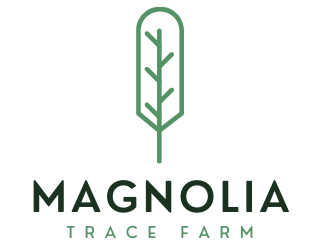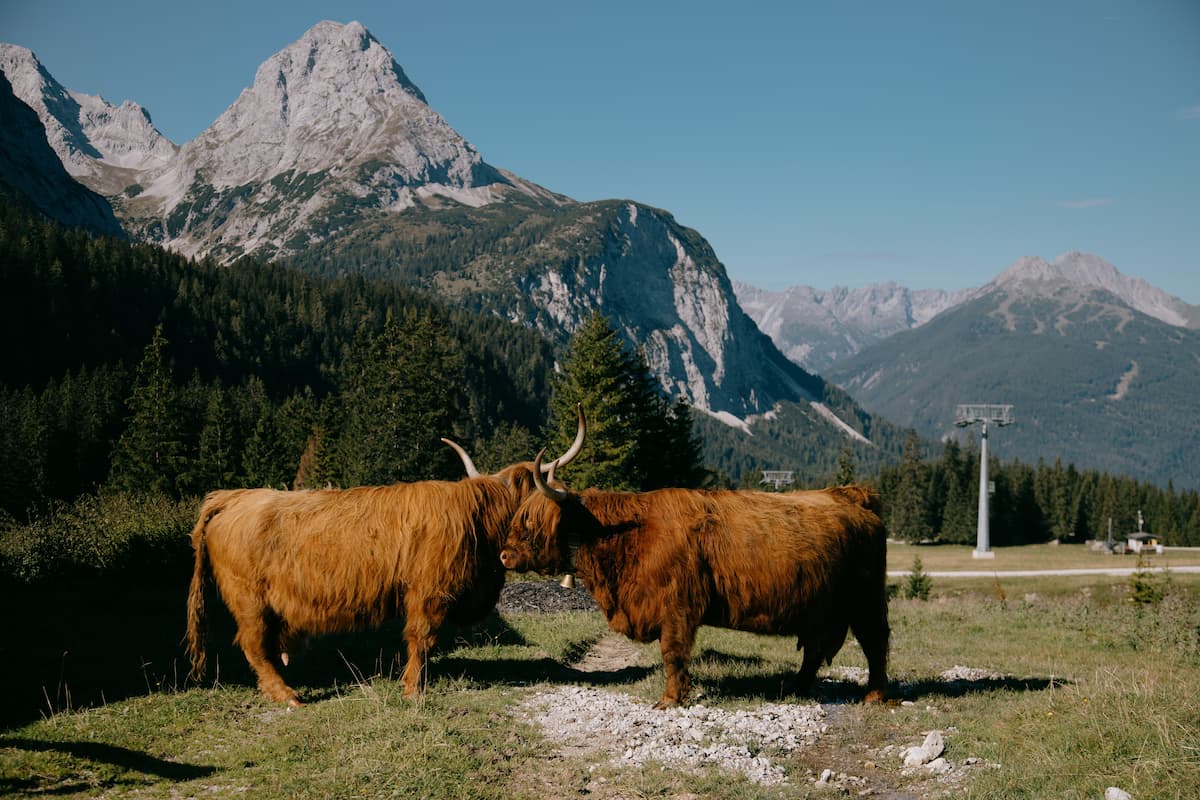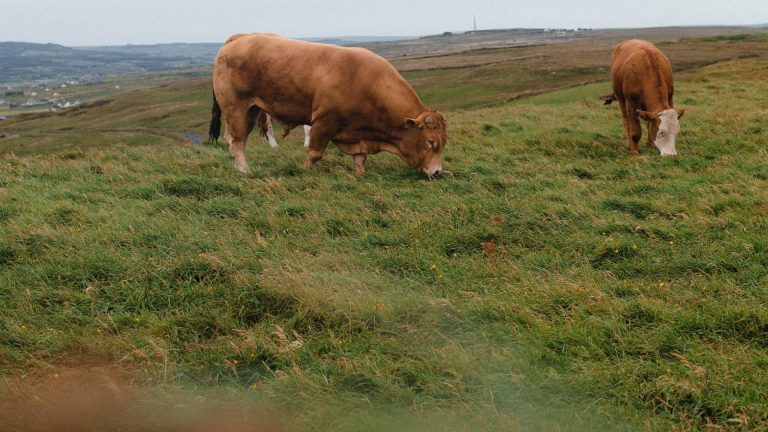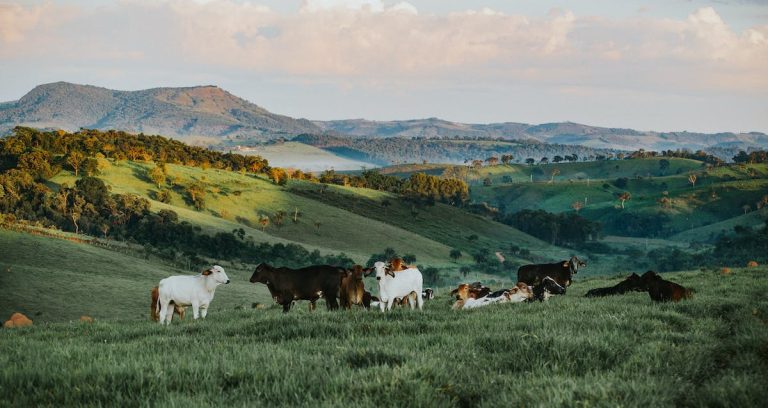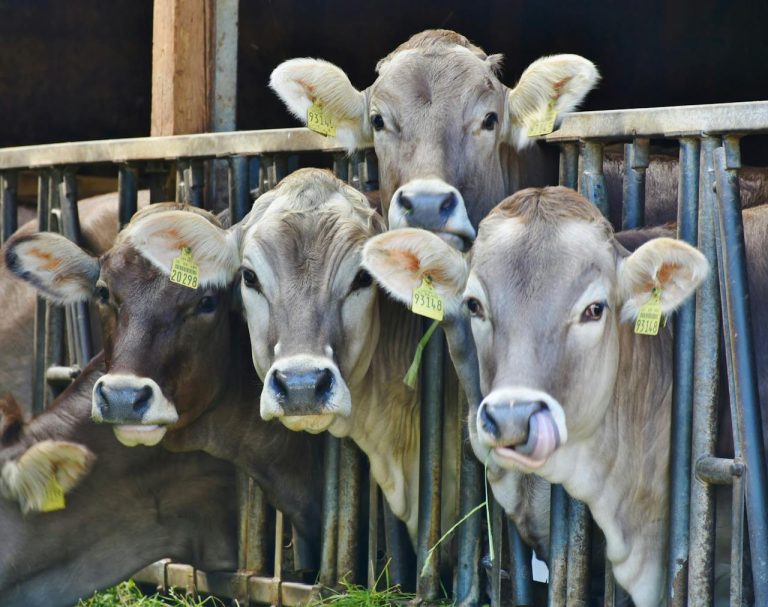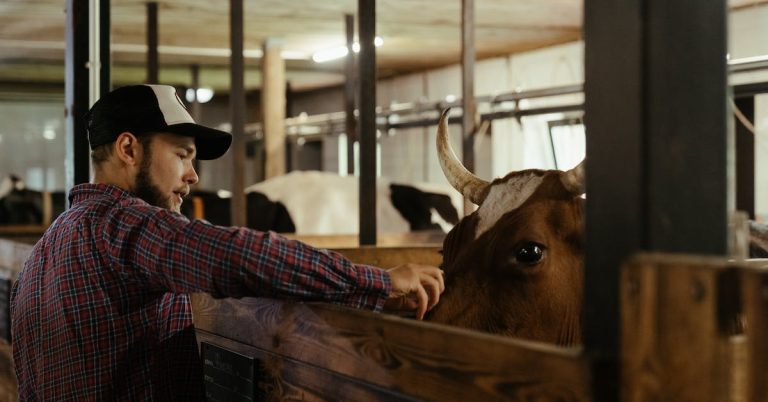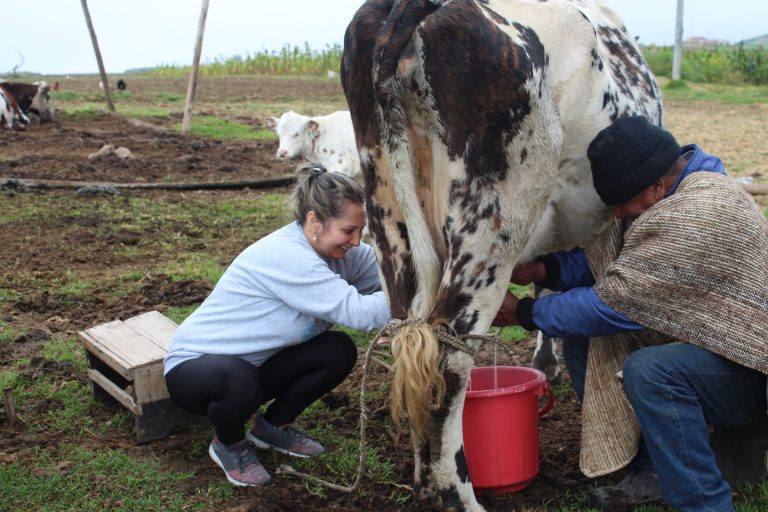Can You Milk a Highland Cow? – Insider’s Guide and Tips
Can You Milk a Highland Cow? Highland cows, known for their long horns and shaggy coats, are a popular breed of cattle native to Scotland. While they are primarily raised for their hardiness and quality meat, some may wonder if it is possible to milk a highland cow.
Although highland cows are not considered to be production milk cows, they can indeed be milked on a small scale for personal use.
On average, highland cows produce around 2 gallons of milk per day, which is significantly less than that of a typical production milk cow.
Quick takeaway
Highland cows are not typically milked because they have small udders and produce less milk than other breeds of cows. However, it is possible to milk a Highland cow if you have the proper equipment and knowledge. If you are interested in milking a Highland cow, it is important to do your research and find a reputable source for information and equipment.
Here are some of the challenges of milking a Highland cow:
- Highland cows have small udders, which can make it difficult to milk them.
- Highland cows produce less milk than other breeds of cows.
- Highland cows are not typically milked, so there may be a lack of information and equipment available.
However, their milk boasts an impressive high butterfat content of up to 10%, making it a rich and unique option for those interested in trying it.
While milking a highland cow might not be suitable for large-scale dairy operations, it certainly presents an opportunity for homesteaders and small farmers to enjoy this specialty milk as a part of their self-sufficient lifestyles.
Highland Cow Origins and History
Ancient Breed
The Highland cow has a fascinating history that dates back thousands of years. Archaeological evidence suggests that the breed has existed since the 6th century. Some believe that the royal predecessor of the Scottish Highland cow is the Ankole-Watusi, which has Egyptian roots around 4000 years B.C. These cattle eventually migrated from Africa to the north lands of Europe, finding their way to the Highlands of Scotland.
Scottish Highlands and Western Islands
The rugged terrain of the Scottish Highlands and Western Islands made the Highland cow a perfect fit for the region. The breed’s exceptional hardiness and adaptability allowed it to thrive in the harsh climate, ranging from extreme cold to damp, coastal conditions.
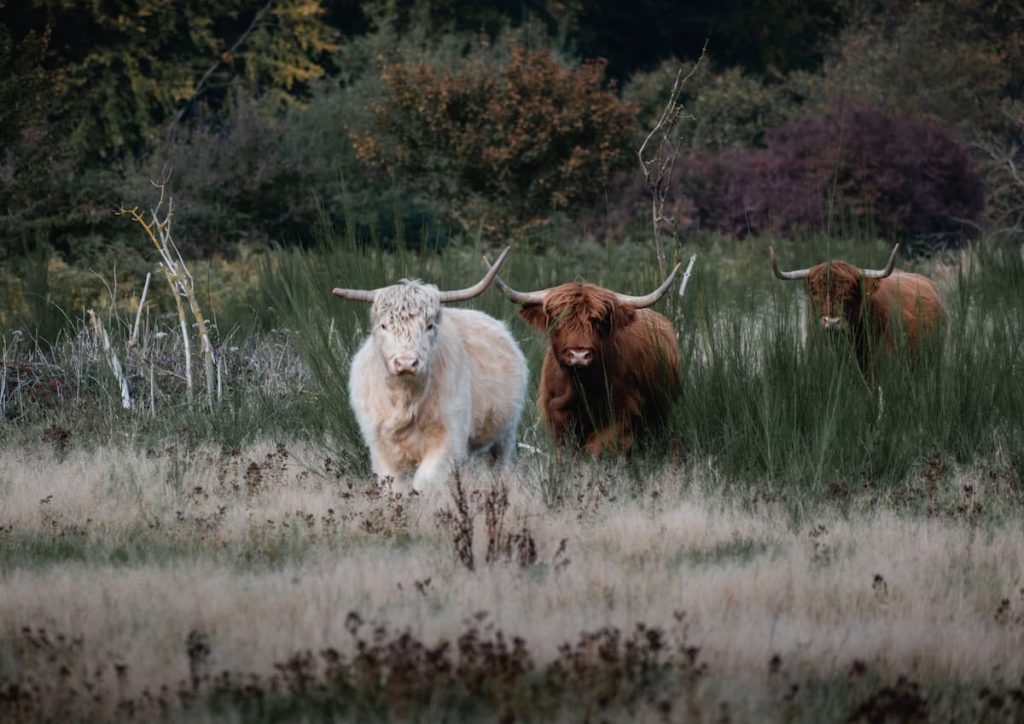
Queen Victoria and Rob Roy Macgregor
Highland cows became a symbol of Scottish pride, with Queen Victoria reportedly being a fan of the breed. Scottish folk hero Rob Roy Macgregor, a well-known cattle drover, also played a significant role in shaping the history of Highland cows. His involvement with the breed helped promote its qualities and contributed to its growing popularity.
Scottish Highland Cattle Society
The Scottish Highland Cattle Society was established in the late 19th century to preserve and promote the Highland breed. The society focuses on maintaining the purity of the breed, as well as organizing shows and events to showcase their unique characteristics. The breed’s popularity has spread worldwide, and Highland cows can now be found in various countries, including the United States, where the breed was first imported in the late 1890s.
Characteristics of Highland Cows
Long Hair and Double Coat
Highland cows are known for their long hair and double coat, which consists of a downy undercoat and a long, coarse outer coat.
The unique feature of these furry cows helps them withstand harsh weather conditions, and maintain body heat in cold environments. Originating from the Scottish Highlands, highland cows are an ancient breed with unique features that sets them apart from other cattle breeds.
Large Horns
These cows are also characterized by their long, curved horns which can grow up to three feet in length. The horns serve as protection from predators and for foraging through snow and dense vegetation. Scottish Highland cows have developed this distinctive feature over centuries, resulting in a strong and hardy breed.
Hardy Breed
Highland cows are a hardy breed, capable of surviving in harsh environments with poor-quality vegetation.
Their double coat of hair enables them to withstand cold temperatures, and their ability to forage for food in dense landscapes makes them resourceful animals.
This ancient breed can adapt to various climates and conditions, contributing to their success as a unique cattle breed.
Body Weight and Size
Highland cattle are known for their small size and comparatively lighter body weight. Adult bulls can weigh between 1,500 to 1,800 pounds, while adult cows typically weigh between 900 to 1,300 pounds. Their smaller stature allows them to navigate uneven terrain more easily and find food in less accessible areas, further enhancing their hardiness as a breed.
Docile Nature
One of the most notable characteristics of Highland cows is their docile and gentle temperament. These docile animals are generally easy to handle and manage, even with their impressive horns. Their friendly and approachable nature endears them to cattle farmers and enthusiasts alike, making them a popular breed in many parts of the world.
Highland Cows as Dairy Cattle
Milk Production and Quality
Highland cows can indeed be milked, although their production levels are typically lower than traditional dairy breeds. On average, a Highland cow can produce around 2 gallons of milk per day. The quality of Highland milk is notable for its high butterfat content, which can be as much as 10%.
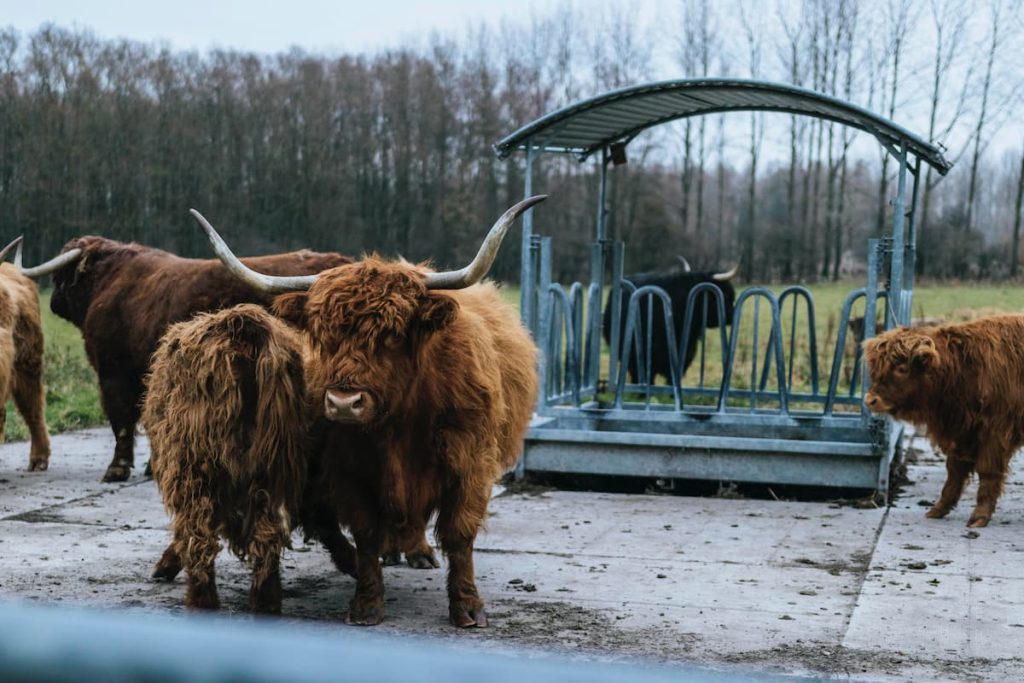
Richness and Nutritional Value
The milk produced by Highland cows is rich in nutrients, offering a higher protein content compared to that of conventional dairy breeds. The extremely high butterfat content gives their milk a unique taste and texture, which can be appealing to some consumers but may require an acquired taste for others.
Sufficient for Personal Use
While Highland cows do not produce enough milk for large-scale commercial operations, their milk production is more than sufficient for personal use.
Many small farmers or homesteaders find the amount of milk produced by a single Highland cow to be adequate for meeting their dairy needs. The milk can be consumed directly, or it can be used to create dairy products such as butter, cheese, or yogurt.
Comparison to Traditional Dairy Breeds
In comparison to traditional dairy breeds, Highland cows produce less milk and the milk they do produce has a distinctively different profile.
The lower milk production of Highland cows makes them less suitable for commercial dairies. However, for individuals, families, or small farms seeking a robust, low-maintenance, and productive dairy animal, the Highland cow can be an appropriate choice.
Keep in mind that milking Highland cows may have some challenges, such as long hair around the udder, which some farmers find difficult to manage during the milking process. However, with regular care and grooming, these challenges can be managed.
In conclusion, Highland cows can be milked, and their milk offers a unique richness and nutritional profile. While not suitable for large-scale dairy farming, these hardy cows can provide plenty of milk for personal use, making them a viable option for those interested in small-scale dairy production.
Highland Cows as Beef Cattle
Highland Beef Production
Highland cows, a cattle breed originating from Scotland, are primarily raised for their beef. Their ability to thrive in various climates, especially cold ones, makes them an ideal choice for beef production in regions with harsh weather conditions.
Highland cows are known to produce a lower quantity of meat compared to other beef breeds. However, their meat is leaner and has a finer texture, making it more distinct and sought-after by consumers. These cattle are efficient grazers, contributing to the environmentally sustainable practices associated with their farming.
Premium Quality Meat
Highland beef is known for its premium quality, thanks to its tender, lean, and flavorful characteristics. The meat has lower levels of fat and cholesterol than many other beef breeds, making it a healthier choice for consumers. This premium meat is often attributed to the cows’ natural diet and outdoor lifestyle, which contributes to the development of their leaner and more flavorful meat.
Comparing with Other Beef Breeds
When compared to other beef breeds, Highland cows stand out mainly due to their unique meat and adaptation to harsh weather conditions. While they might not have the same output levels as some popular breeds like Angus or Hereford, their meat’s premium quality makes up for this difference.
In summary, Highland cattle offer a unique and premium beef option to the market. Their ability to withstand various climates and produce lean, healthy meat contributes to their continued success in the beef industry.
Highland Cow Adaptability
Highland cows are a hardy breed of cattle known for their adaptability to various environments. Their resilience can be attributed to their ability to thrive in cold weather, live successfully in wooded areas and poor pastures, and perform well in different regions.
Thriving in Cold Weather
Highland cows are well-suited to withstand cold weather conditions, thanks to their long shaggy coats. Their coats provide insulation, allowing them to remain comfortable during harsh winters. This characteristic has made them a popular choice for farmers in colder regions, such as North America and parts of Europe.
Living in Wooded Areas and Poor Pasture
Another aspect that highlights the adaptability of Highland cows is their ability to live in wooded areas and poor-quality pastures. These cows are natural foragers, which means they can survive on low-quality vegetation, including shrubs and bushes. This trait is particularly useful in areas with limited grazing options or poor soil quality, such as parts of the United States and New Zealand.
Performance in Different Regions
Highland cows have not only proven to be adaptable in colder climates, but they also thrive in various geographical locations. Farmers in North America, South America, parts of Europe, and New Zealand have successfully raised this breed as part of their livestock. Highland cows’ adaptability is attributed to their:
- Tolerance to cold climate
- Foraging skills in wooded areas
- Adaptability to poor-quality pastures
Due to their hardiness and ability to adapt to different environments, Highland cows have become a popular choice for farmers around the world.
Miniature Highland Cows
Origins and Selective Breeding
Miniature Highland Cows have been created through the process of selective breeding to make them smaller in size while still maintaining the unique features and characteristics of the original Highland cattle. This was done by carefully selecting breeders that had smaller-than-average offspring, over generations of breeding, to create the miniature version of an already well-loved and popular cattle breed.
Size and Features
These Miniature Highland cattle have become increasingly popular due to their smaller size and corresponding smaller teats, making them suitable for smaller farms and even as pets. On average, Mini Highland cows stand at about half the size of their full-sized counterparts. They maintain the same characteristics such as the long, shaggy hair and iconic horns, which make them appealing to owners.
Popularity in Small Farms and as Pets
Due to their size and friendly nature, Mini Highland Cows are well-suited for small farms and as pets. They have a sweet disposition and love being around people, often compared to “giant teddy bears.”
When it comes to milk production, Miniature Highland Cows can produce around 2 gallons of milk per day for personal consumption; however, their milk production is typically lower than other larger milk-producing breeds. Their milk is characterized by a high butterfat content, up to 10%, which some farmers find appealing.
To accommodate these smaller cows, appropriate open shelters should be provided to protect them from extreme temperature changes and harsh weather conditions such as wind and rain. These modified living environments make it easy for Miniature Highland Cattle to thrive in small farms and as pets, resulting in a satisfying and rewarding experience for the owners.
Highland Cow Fun Facts
Highland cows, also known as Hairy Coos, Highland Coos or Heilan Coo, are a unique cattle breed originating from Scotland. They have a distinct appearance, thanks to their long, shaggy coats and pronounced horns. Here are some fun facts about these intriguing animals.
One of the most noticeable features of Highland cows is their long fringe, also known as a “dossan” or “bangs.” This long hair helps protect them against the harsh weather conditions of the Scottish highlands. They have a coarse outer coat that can be up to 33cm long, as well as an inner coat that is softer and woollier, providing excellent insulation against the cold, rain, and wind.
Highland cows are often found around the Loch Ness area, grazing in the lush green fields. Their adaptability to various climates, particularly cold ones, has led to their presence in countries all over the world.
When it comes to distinguishing between males and females, the horns are a key indicator. A bull’s horns tend to grow forwards or slightly downwards, with a much wider base, whereas a cow’s horns face upwards and have a longer, finer tip.
In addition to their unique appearance, Highland cows are known for their friendly and gentle nature. Their life span is longer than most other cattle breeds, averaging between 15 and 20 years.
Interestingly, Highland cows produce milk that is high in butterfat, making it ideal for producing butter and cheese. Though one Highland cow may not produce as much milk as other dairy breeds, their milk is still valuable for its premium quality.
Conclusion
In summary, Highland cows can indeed be milked, though not as productively as other dairy cattle. These unique cows produce around 2 gallons of milk per day on average, with a butterfat content of up to 10%. This high butterfat content is appealing to some farmers, but may not be suitable for all uses.
Highland cows have smaller teats than traditional dairy cows, which can make milking slightly more challenging. Their strong maternal instincts may also contribute to difficulties in milking, as they may be more protective of their milk than other breeds.
Weighing around 500 kg for females and 800 kg for males, Highland cows are smaller than common dairy cattle. Despite their smaller size and lower milk production, Highland cows enjoy certain advantages, such as adaptability to harsh environments and unique foraging abilities.
In conclusion, while milking a Highland cow is possible, it is not as efficient as milking specialized dairy cattle. However, their unique characteristics make them a valuable addition to some farms, particularly those seeking a hardy breed with high butterfat content.
